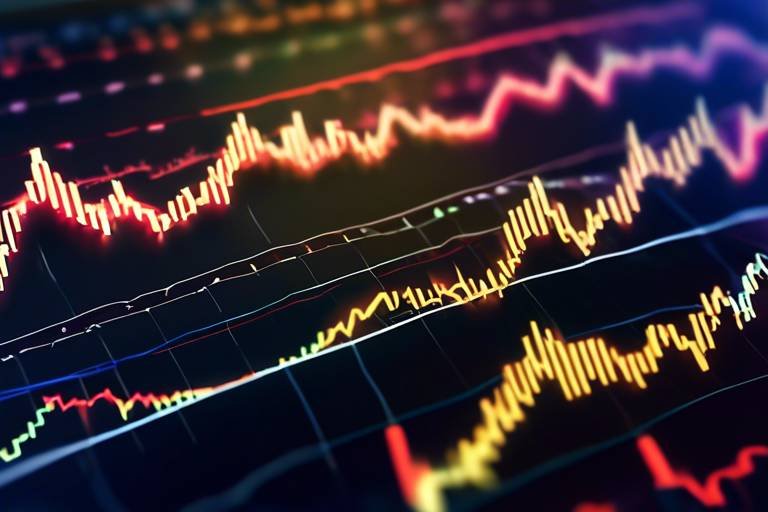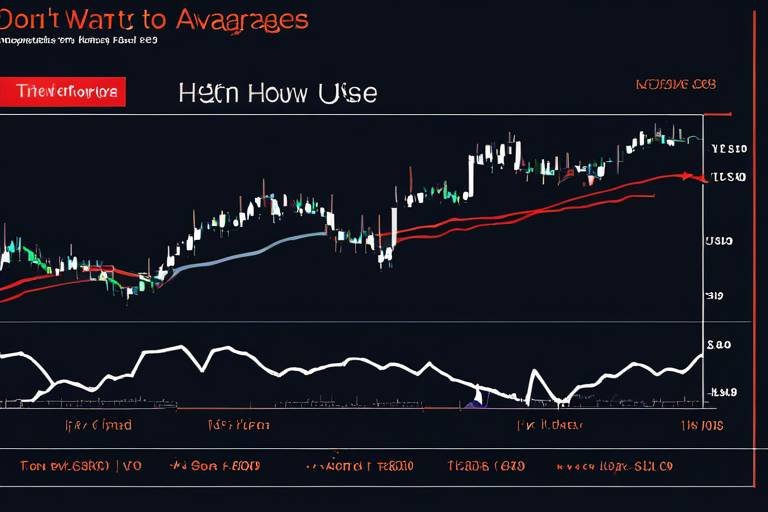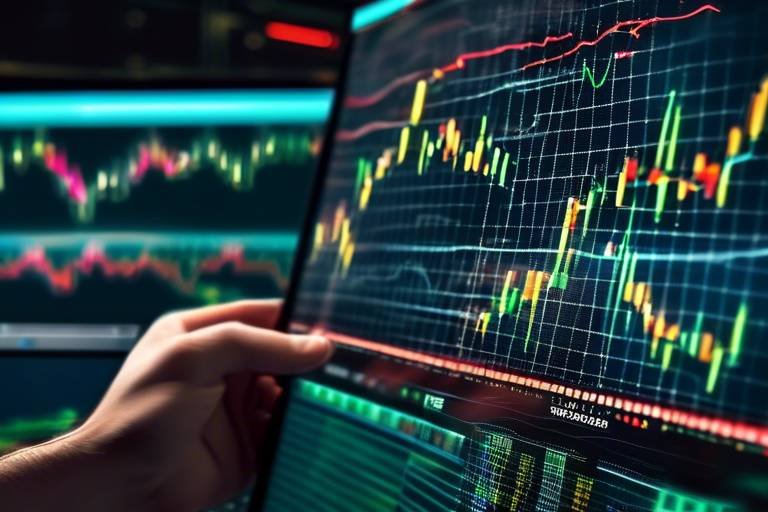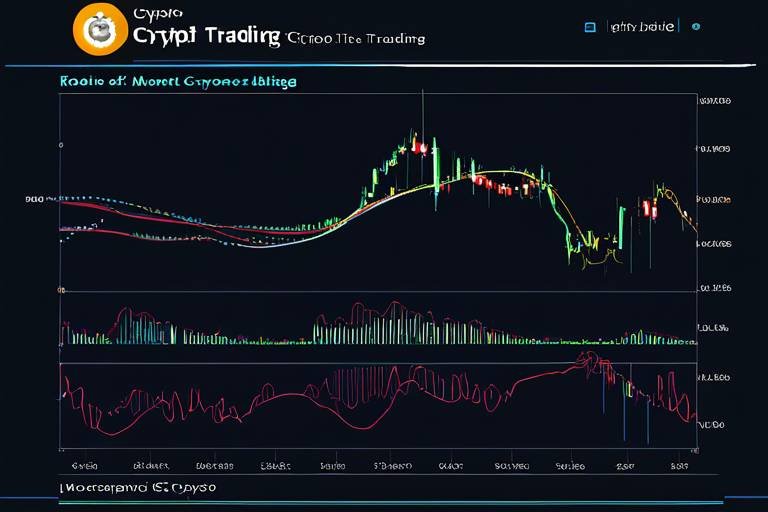The Importance of Data-Driven Decisions in Trading
In the fast-paced world of trading, making informed decisions can mean the difference between substantial profits and devastating losses. This is where data-driven decisions come into play. By leveraging a wealth of data, traders can enhance their strategies, improve risk management, and ultimately achieve better financial outcomes. Imagine you're navigating a vast ocean; without a map or compass, you might drift aimlessly. However, with the right data, you can chart a course that leads you to success. In this article, we'll explore the various aspects of how data utilization transforms trading environments.
At its core, data-driven trading is about making decisions rooted in quantitative analysis and statistical data. This approach allows traders to move beyond gut feelings and emotional reactions, instead relying on solid evidence to guide their actions. By adopting a data-centric approach, traders can identify patterns, forecast market trends, and make more informed choices. The benefits of this methodology are numerous:
- Increased accuracy: Data analysis helps in predicting market movements with greater precision.
- Enhanced strategy development: Traders can refine their strategies based on historical data and performance metrics.
- Improved risk assessment: Data allows for better evaluation of potential risks and rewards.
In essence, data-driven trading empowers traders to act with confidence, knowing they have the analytical backing to support their decisions.
In the realm of trading, various types of data play crucial roles in shaping decisions. Understanding these data types is essential for any trader looking to enhance their effectiveness. Let's delve into some key categories:
One of the most significant data types is historical price data. This data provides insights into past market behavior, allowing traders to identify trends and patterns that can inform future actions. By analyzing historical data, traders can answer questions like, "What happened during similar market conditions in the past?" This analysis can be aided by the use of charts and graphs, which visually represent the data, making it easier to spot trends and anomalies.
Charts and graphs are invaluable tools in the trader's toolkit. They transform complex data into visual representations that are easier to interpret. Different types of charts—such as line charts, bar charts, and candlestick charts—offer unique insights into market movements. For instance, a candlestick chart can reveal not just the price movement but also market sentiment within a specific timeframe.
Another critical aspect of utilizing historical price data is backtesting. Backtesting involves testing trading strategies against historical data to evaluate their potential performance. By simulating trades based on past data, traders can identify which strategies may yield the best results. This process is essential for refining approaches and minimizing risks before committing real capital.
In addition to historical prices, understanding market sentiment is vital. Market sentiment reflects the overall attitude of traders towards a particular security or market. By gauging sentiment, traders can gain insights into potential market movements. For example, if sentiment is overwhelmingly positive, it may indicate a bullish trend, while negative sentiment could suggest a bearish outlook. Tools like sentiment analysis platforms and social media monitoring can help traders stay informed about the prevailing mood in the market.
Effective risk management is a cornerstone of successful trading. By utilizing data-driven insights, traders can identify, assess, and mitigate risks within their strategies. Understanding how to manage risk can be likened to wearing a seatbelt in a car; it may not prevent an accident, but it significantly reduces the impact.
One of the most important tools for managing risk is the stop-loss order. This order automatically sells a security when it reaches a certain price, limiting potential losses. Data analysis can inform the optimal placement of stop-loss orders based on market conditions. For example, if historical data shows that a particular stock tends to bounce back after hitting a specific price point, a trader might strategically place a stop-loss just below that level to minimize losses while allowing for potential recovery.
Diversification is another key strategy for spreading risk across various assets. By analyzing data, traders can identify correlations between different securities and create a diversified portfolio that enhances stability and reduces overall risk. For instance, a trader might analyze historical performance data to find assets that typically move inversely to one another, allowing for a balanced approach that mitigates potential downturns.
The advancements in technology have revolutionized the way traders analyze data. With an array of tools and platforms available, making data-driven decisions has never been easier. From algorithmic trading systems to sophisticated data visualization tools, technology empowers traders to make informed choices quickly and efficiently.
Algorithmic trading utilizes automated systems to execute trades based on predefined criteria. These algorithms can process vast amounts of data in real-time, allowing traders to capitalize on market opportunities as they arise. By leveraging data, algorithms can optimize trading strategies and improve overall efficiency.
Data visualization tools are essential for interpreting complex data sets. They help traders make sense of the information at hand, turning numbers into actionable insights. Popular visualization tools like Tableau and Power BI allow traders to create dynamic dashboards that showcase key metrics and trends, enhancing their decision-making process.
Q: What is data-driven trading?
A: Data-driven trading involves making trading decisions based on quantitative analysis and statistical data rather than intuition or emotion.
Q: Why is historical price data important?
A: Historical price data helps traders identify trends and patterns from past market behavior, which can inform future trading decisions.
Q: How can I manage risk in trading?
A: Risk management can be achieved through tools like stop-loss orders and diversification strategies, both informed by data analysis.
Q: What role does technology play in data-driven trading?
A: Technology provides traders with tools for data analysis, visualization, and automated trading, making it easier to make informed decisions.

Understanding Data-Driven Trading
Data-driven trading is like having a crystal ball in the unpredictable world of finance. Instead of relying on gut feelings or hunches, traders who embrace this approach make decisions rooted in hard data and statistical analysis. This method not only enhances the accuracy of trading strategies but also provides a structured way to navigate the complexities of the market. Imagine trying to find your way through a dense fog without a map; that’s what trading without data feels like. By leveraging data, traders can illuminate their path, making informed decisions that lead to better financial outcomes.
At its core, data-driven trading involves the systematic collection and analysis of various data types to inform trading decisions. The beauty of this approach lies in its ability to eliminate emotional biases, which can cloud judgment and lead to costly mistakes. By focusing on quantitative analysis, traders can identify patterns and trends that might otherwise go unnoticed. This is akin to a detective piecing together clues to solve a mystery; every bit of data contributes to a clearer picture of market dynamics.
One of the primary benefits of adopting a data-centric approach is the ability to backtest trading strategies. Backtesting allows traders to simulate their strategies against historical data, providing valuable insights into how those strategies would have performed in real market conditions. This not only boosts confidence in trading decisions but also highlights areas for improvement. It’s like practicing for a big game; the more you rehearse, the better prepared you are when it’s time to play.
Moreover, data-driven trading is not just about numbers; it's also about understanding the stories behind those numbers. For instance, market sentiment plays a crucial role in influencing price movements. By analyzing social media trends, news articles, and other sentiment indicators, traders can gauge the overall mood of the market. This insight can be the difference between a successful trade and a missed opportunity. In this way, data-driven trading creates a comprehensive framework that combines quantitative analysis with qualitative insights.
In conclusion, understanding data-driven trading is essential for anyone looking to thrive in the financial markets. It equips traders with the tools to make informed decisions, enhances risk management, and ultimately leads to better financial outcomes. As we delve deeper into the various types of data used in trading, it becomes clear that embracing a data-centric approach is not just an option; it’s a necessity for success in today’s fast-paced trading environment.
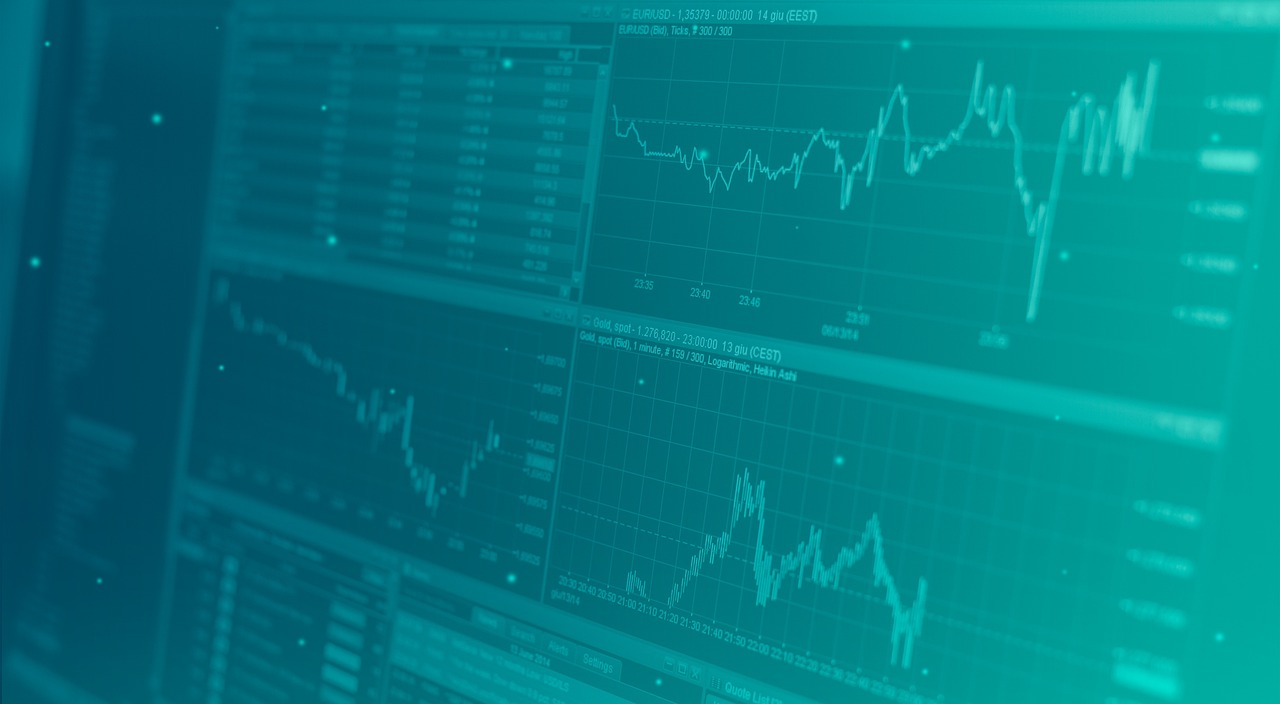
Types of Data in Trading
When it comes to trading, data is king. The decisions traders make are often influenced by various types of data, each of which plays a unique role in shaping strategies and outcomes. Understanding the different types of data available can significantly enhance a trader's ability to make informed choices. Let's dive into the primary categories of data that traders utilize: historical prices, market sentiment, and economic indicators.
Historical price data is perhaps the most fundamental type of data used in trading. It consists of past prices for a security over a specific time frame, allowing traders to analyze trends and patterns. By studying historical price movements, traders can identify potential entry and exit points, as well as support and resistance levels. This data also helps in recognizing recurring patterns that may indicate future price movements.
To effectively analyze historical price data, traders often employ charts and graphs. These visual tools help simplify complex data sets, making it easier to spot trends at a glance. For instance, a simple line chart can show the overall trajectory of a stock, while candlestick charts provide deeper insights into price movements within specific time frames. The choice of chart type can significantly impact a trader's understanding and interpretation of the data.
Market sentiment is another critical type of data that reflects the overall attitude of traders toward a security or market. This sentiment can be gauged through various means, such as social media analysis, news articles, and sentiment indicators. Understanding market sentiment can provide traders with a psychological edge, as it often influences price movements. For example, if the sentiment around a particular stock is overwhelmingly positive, it may lead to increased buying pressure, driving the price higher.
Lastly, we have economic indicators, which provide insight into the overall health of the economy and can significantly impact trading decisions. Indicators such as GDP growth rates, unemployment rates, and inflation rates can influence market behavior. Traders often keep a close eye on these indicators as they can signal potential shifts in market trends. For instance, a sudden increase in unemployment may lead to bearish sentiment in the stock market, prompting traders to adjust their positions accordingly.
In summary, the types of data available in trading are diverse and play a crucial role in decision-making. By leveraging historical price data, understanding market sentiment, and keeping an eye on economic indicators, traders can enhance their strategies and increase their chances of success in the financial markets. The interplay between these data types creates a rich tapestry of information that, when interpreted correctly, can lead to more informed and effective trading outcomes.
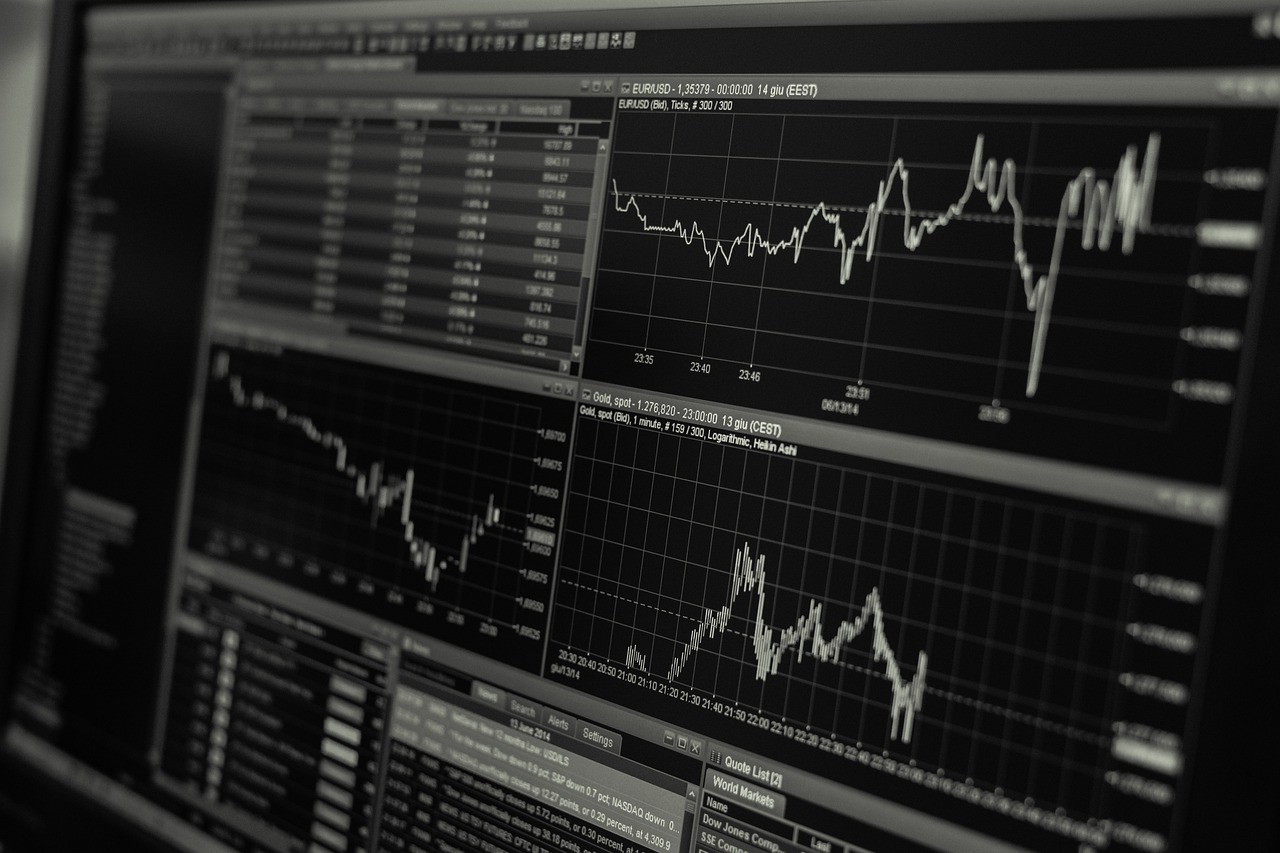
Historical Price Data
When it comes to trading, is like the treasure map that guides you through the unpredictable waters of the market. This data provides a wealth of information about how a particular security has performed over time, revealing trends and patterns that can be crucial for making informed trading decisions. By analyzing historical price movements, traders can gain insights into potential future performance, helping them to navigate the market more effectively.
Imagine you're a detective, piecing together clues from the past to solve a mystery. Each price point is a clue that tells a story about market behavior. For instance, if you notice that a stock consistently rises after hitting a certain price level, you might conclude that this level acts as a support point. This kind of analysis can be invaluable, especially when you're trying to predict when to enter or exit a trade.
To analyze historical price data effectively, traders often use various techniques. One of the most popular methods is to utilize charts and graphs, which visually represent price movements over time. These tools allow traders to spot trends at a glance and make quicker decisions. For example, a line chart can show the overall direction of a stock, while a candlestick chart provides more detailed information about price movements during specific time frames.
| Chart Type | Description | Best For |
|---|---|---|
| Line Chart | Displays price movements over time with a continuous line. | Identifying overall trends. |
| Candlestick Chart | Shows opening, closing, high, and low prices for a specific period. | Analyzing price action and market sentiment. |
| Bar Chart | Similar to candlestick charts but uses bars to represent price movements. | Visualizing price ranges over time. |
Moreover, the process of backtesting is another critical aspect of utilizing historical price data. Backtesting involves applying your trading strategies to historical data to see how they would have performed in the past. This practice not only helps in validating the effectiveness of a strategy but also provides insights into potential risks and rewards. It’s like rehearsing for a play; you want to know how your performance would have been before the actual show!
However, it’s essential to remember that while historical data can provide valuable insights, it is not foolproof. Markets can change due to various factors such as economic conditions, geopolitical events, or shifts in investor sentiment. Therefore, while historical price data is a powerful tool, it should be used in conjunction with other data types and analysis techniques to form a comprehensive trading strategy.
In summary, historical price data is a cornerstone of data-driven trading. By leveraging this information, traders can uncover trends, validate strategies through backtesting, and make more informed decisions. As you delve deeper into your trading journey, remember to treat historical data as your trusted guide, helping you navigate the complex and ever-changing landscape of the financial markets.

Using Charts and Graphs
When it comes to trading, the old adage "a picture is worth a thousand words" rings particularly true. Charts and graphs serve as visual representations of historical price data, allowing traders to quickly grasp complex information and identify trends in a matter of seconds. Imagine trying to decipher a long, dense report filled with numbers—it's overwhelming, right? Now, picture the same data displayed in a beautifully crafted chart. Instantly, you can see patterns and movements that might have taken hours to analyze in text form.
Different types of charts can provide unique insights into market behavior. For instance, line charts are perfect for showing price movements over time, while bar charts can help you visualize the opening, closing, high, and low prices for a specific period. Then there are candlestick charts, which not only show the same information as bar charts but also add a layer of color coding to indicate whether the price moved up or down during that period. The choice of chart can significantly influence your trading strategy, so understanding their applications is crucial.
Moreover, it's essential to recognize that charts are not just pretty pictures; they are tools that can enhance your decision-making process. For example, by analyzing a moving average on a chart, traders can determine the prevailing trend and make informed decisions about when to enter or exit a trade. This is where technical indicators come into play, providing additional layers of analysis that can help confirm trends or signal potential reversals.
To illustrate this, consider the following table that summarizes the key types of charts and their primary uses:
| Chart Type | Primary Use |
|---|---|
| Line Chart | Tracks price movements over time, ideal for identifying trends. |
| Bar Chart | Displays opening, closing, high, and low prices, useful for detailed analysis. |
| Candlestick Chart | Combines price data with visual cues for bullish or bearish movements. |
In addition, it's crucial to consider the time frame of the charts you are using. Short-term charts (like 1-minute or 5-minute) can provide insights for day trading, while longer-term charts (like daily or weekly) are more suited for swing trading or long-term investments. Each time frame tells a different story, and understanding the context is key to making data-driven decisions.
In conclusion, using charts and graphs effectively can transform the way you approach trading. They not only simplify the data but also enhance your ability to make informed decisions quickly. Remember, in the fast-paced world of trading, the quicker you can interpret data, the better your chances of success.
- What is the best type of chart for a beginner trader? Line charts are often recommended for beginners as they provide a clear view of price movement over time without overwhelming complexity.
- How do I choose the right time frame for my charts? It depends on your trading strategy. Day traders typically use shorter time frames, while long-term investors may prefer daily or weekly charts.
- Can I use multiple charts at the same time? Absolutely! Many traders use multiple charts to compare different time frames or assets to gain a comprehensive view of the market.

Backtesting Strategies
Backtesting is a crucial component in the toolkit of any trader aiming to refine their strategies and enhance their chances of success. Essentially, it involves testing a trading strategy using historical data to determine its viability. Think of it as a rehearsal before a big performance; you want to ensure everything runs smoothly before you step onto the stage of live trading. By analyzing how a strategy would have performed in the past, traders can gain valuable insights into its potential effectiveness in future market conditions.
So, how exactly does backtesting work? The process starts with the selection of a trading strategy, which could range from simple moving average crossovers to complex algorithmic models. Once the strategy is defined, traders apply it to historical price data, simulating trades as if they were executed in real-time. This allows them to see how the strategy would have fared, including the number of winning and losing trades, the overall profitability, and the maximum drawdown experienced during the backtest period.
One of the key benefits of backtesting is that it helps traders identify the strengths and weaknesses of their strategies. For instance, a trader may discover that a particular strategy performs well during trending markets but fails during sideways markets. This insight can lead to adjustments in the strategy to improve its robustness across different market conditions. Additionally, backtesting can help in optimizing parameters such as stop-loss levels and take-profit targets, ensuring that traders are not just relying on gut feelings but are making informed decisions based on data.
| Key Metrics in Backtesting | Description |
|---|---|
| Win Rate | The percentage of trades that are profitable. |
| Return on Investment (ROI) | The total profit or loss relative to the initial investment. |
| Maximum Drawdown | The largest peak-to-trough decline in the value of the trading account. |
| Sharpe Ratio | A measure of risk-adjusted return, showing how much excess return is received for the extra volatility endured. |
However, it’s essential to approach backtesting with a critical mindset. Overfitting is a common pitfall where traders adjust their strategies too much to past data, leading to a model that performs well historically but poorly in live markets. To avoid this, traders should ensure that they validate their strategies using out-of-sample data—data that was not used during the initial backtesting phase. This validation process can provide a more realistic expectation of how the strategy will perform in the future.
In conclusion, backtesting is not just a box to check off; it's a fundamental practice that empowers traders to make data-driven decisions. By rigorously testing strategies against historical data, traders can enhance their understanding of market dynamics, refine their approaches, and ultimately increase their chances of achieving financial success in the ever-evolving world of trading.
- What is backtesting? Backtesting is the process of testing a trading strategy using historical data to evaluate its effectiveness.
- Why is backtesting important? It helps traders understand how a strategy would have performed in the past, allowing them to make informed decisions and optimize their approaches.
- What are common pitfalls in backtesting? Overfitting and using biased historical data can lead to unrealistic expectations of a strategy's future performance.
- How can I validate my backtesting results? Use out-of-sample data that was not included in the initial backtesting to ensure your strategy is robust.

Market Sentiment Analysis
Market sentiment analysis is a fascinating aspect of trading that delves into the psychology of traders and investors. Have you ever wondered why the market behaves in a certain way, even when the fundamentals seem sound? That's where market sentiment comes into play. It reflects the overall attitude of traders towards a particular security or the market as a whole, often driving prices in ways that pure data might not predict. Understanding this sentiment can be the secret sauce to making informed trading decisions.
So, how do traders gauge market sentiment? There are several methods, but they generally fall into two categories: qualitative and quantitative analysis. Qualitative analysis involves assessing news articles, social media discussions, and even forums like Reddit or Twitter to get a feel for what the market is thinking. On the other hand, quantitative analysis uses numerical data, such as sentiment indicators, to measure the mood of the market. Both methods have their merits, and savvy traders often use a combination of both to get a comprehensive view.
For instance, you might come across various sentiment indicators that can help you gauge market mood. Here are a few popular ones:
- Fear and Greed Index: This index measures the emotions driving the market, ranging from extreme fear to extreme greed.
- Consumer Sentiment Index: This index reflects how optimistic or pessimistic consumers are regarding their financial situation.
- Put/Call Ratio: This ratio compares the trading volume of put options to call options, indicating market sentiment towards future price movements.
Understanding market sentiment is crucial because it often leads to price movements that may not align with traditional analysis. For instance, during a bull market, even bad news can be overlooked as traders remain optimistic. Conversely, in a bear market, good news might not be enough to lift prices if the prevailing sentiment is negative. This phenomenon highlights the importance of being aware of the mood of the market and how it can impact your trading strategies.
Moreover, market sentiment can create opportunities for traders who know how to interpret the data. For example, if you notice that sentiment is overwhelmingly negative for a stock but the fundamentals are still strong, it might indicate a buying opportunity. Conversely, if sentiment is excessively positive, it could signal an impending correction. The key is to remain vigilant and not to let emotions cloud your judgment.
In conclusion, market sentiment analysis is a powerful tool in a trader's arsenal. By keeping an eye on the psychological factors that influence market behavior, traders can make more informed decisions, anticipate market movements, and ultimately improve their trading outcomes. So, the next time you're analyzing a potential trade, don't forget to consider the mood of the market—your profits might just depend on it!
1. What is market sentiment?
Market sentiment refers to the overall attitude of traders and investors towards a particular security or the market as a whole. It can be influenced by news, events, and the general mood of the trading community.
2. How can I gauge market sentiment?
You can gauge market sentiment through qualitative methods like analyzing news articles and social media, as well as quantitative methods like using sentiment indicators such as the Fear and Greed Index or the Put/Call Ratio.
3. Why is market sentiment important in trading?
Market sentiment is important because it can drive price movements that may not align with traditional analysis. Understanding sentiment can help traders identify potential buying or selling opportunities.
4. Can market sentiment change quickly?
Yes, market sentiment can change rapidly due to news events, economic reports, or changes in market conditions. Traders need to stay updated and be adaptable to these changes.

Risk Management through Data
Effective risk management is the backbone of successful trading. Without a solid strategy to identify and mitigate risks, traders can quickly find themselves in precarious situations. That's where data-driven insights come into play. By leveraging data, traders can make informed decisions that not only protect their investments but also enhance their overall trading strategies.
One of the essential aspects of risk management is understanding the potential risks associated with various trading strategies. Utilizing data allows traders to assess these risks quantitatively. For instance, historical data can reveal patterns of volatility in specific assets, helping traders anticipate potential downturns. This foresight enables traders to adjust their strategies accordingly, ensuring they are not caught off-guard by sudden market shifts.
Moreover, data-driven risk management isn't just about identifying risks; it's also about implementing measures to control them. One of the most effective tools in a trader's arsenal is the stop-loss order. By setting stop-loss orders based on data analysis, traders can limit their losses in unfavorable market conditions. For example, if historical data indicates that a particular asset tends to drop significantly after reaching a certain price point, a trader can set a stop-loss order just below that level to minimize potential losses.
In addition to stop-loss orders, diversification is another critical strategy for managing risk. By spreading investments across various assets, traders can reduce the impact of a poor-performing asset on their overall portfolio. Data plays a crucial role in this process. By analyzing correlations between different assets, traders can determine which combinations will provide the most stability. For instance, if two assets typically move in opposite directions, including both in a portfolio can help balance out fluctuations.
To illustrate the importance of diversification, consider the following table that showcases hypothetical returns from a diversified portfolio versus a non-diversified one:
| Portfolio Type | Year 1 Return (%) | Year 2 Return (%) | Year 3 Return (%) |
|---|---|---|---|
| Diversified Portfolio | 8 | 10 | 6 |
| Non-Diversified Portfolio | 15 | -5 | 12 |
This table clearly demonstrates how a diversified portfolio can provide more consistent returns, minimizing the risk of significant losses. By relying on data to inform their diversification strategies, traders can build a more resilient investment portfolio.
In summary, risk management through data is not merely a best practice; it's a necessity for anyone serious about trading. By harnessing the power of data, traders can make informed decisions that not only protect their capital but also pave the way for long-term success in the market. As we continue to explore the fascinating world of trading, remember that data is your ally in navigating the complexities of risk.
- What is risk management in trading? Risk management in trading involves strategies and techniques used to minimize potential losses in financial markets.
- How can data help in risk management? Data helps traders identify potential risks, analyze historical trends, and implement strategies like stop-loss orders and diversification.
- What is a stop-loss order? A stop-loss order is a predetermined price at which a trader will sell an asset to prevent further losses.
- Why is diversification important? Diversification spreads risk across different assets, reducing the impact of a poor-performing investment on the overall portfolio.

Setting Stop-Loss Orders
When it comes to trading, one of the most crucial strategies for protecting your investment is setting stop-loss orders. Imagine you're on a rollercoaster ride; the thrill is exhilarating, but you wouldn't want to go off the rails, right? Similarly, in trading, stop-loss orders act as your safety harness, ensuring that your losses are limited when the market takes an unexpected plunge. So, what exactly are stop-loss orders, and how can they be effectively utilized?
A stop-loss order is a predetermined price point at which a trader will sell a security to prevent further losses. By setting this order, you essentially automate your risk management strategy, allowing you to focus on other aspects of trading without constantly monitoring the market. But here’s the catch: the placement of your stop-loss order is critical. If set too close to the current market price, you might end up selling prematurely due to normal market fluctuations. Conversely, placing it too far away can expose you to greater losses.
To determine the optimal placement of your stop-loss order, you can use various data-driven methods. One effective approach is to analyze historical price data. By examining how a security has reacted to market changes in the past, you can identify key support and resistance levels. For instance, if a stock has consistently bounced back from a certain price point, placing your stop-loss just below that level might be a wise decision. This strategy not only protects your investment but also allows you to ride out minor market fluctuations.
Another important factor to consider is market volatility. In a highly volatile market, prices can swing dramatically, making it essential to set a stop-loss order that accounts for these fluctuations. Using tools like the Average True Range (ATR) can help you gauge volatility and adjust your stop-loss levels accordingly. For example, if the ATR indicates that a stock typically moves $2.00 per day, setting your stop-loss order $2.50 below your purchase price might give you enough leeway to avoid being stopped out too early.
Let’s not forget about the emotional aspect of trading. One of the biggest pitfalls traders face is the fear of loss. By implementing stop-loss orders, you take the emotion out of your trading decisions. You have a plan in place, and regardless of how the market behaves, you stick to that plan. This discipline is vital for long-term success in trading.
In summary, setting stop-loss orders is an essential component of a sound trading strategy. By carefully considering factors like historical price data, market volatility, and emotional discipline, you can effectively limit your losses and protect your investments. Remember, trading is not just about making money; it’s also about managing risk. So, are you ready to harness the power of stop-loss orders in your trading journey?
- What is a stop-loss order? A stop-loss order is an instruction to sell a security when it reaches a certain price to limit potential losses.
- How do I determine where to set my stop-loss? Analyze historical price data and consider market volatility to find optimal stop-loss levels.
- Can I adjust my stop-loss order? Yes, you can adjust your stop-loss order as market conditions change.
- What happens if the market gaps down? If the market gaps down, your stop-loss order will be executed at the next available price, which may be lower than your stop-loss price.
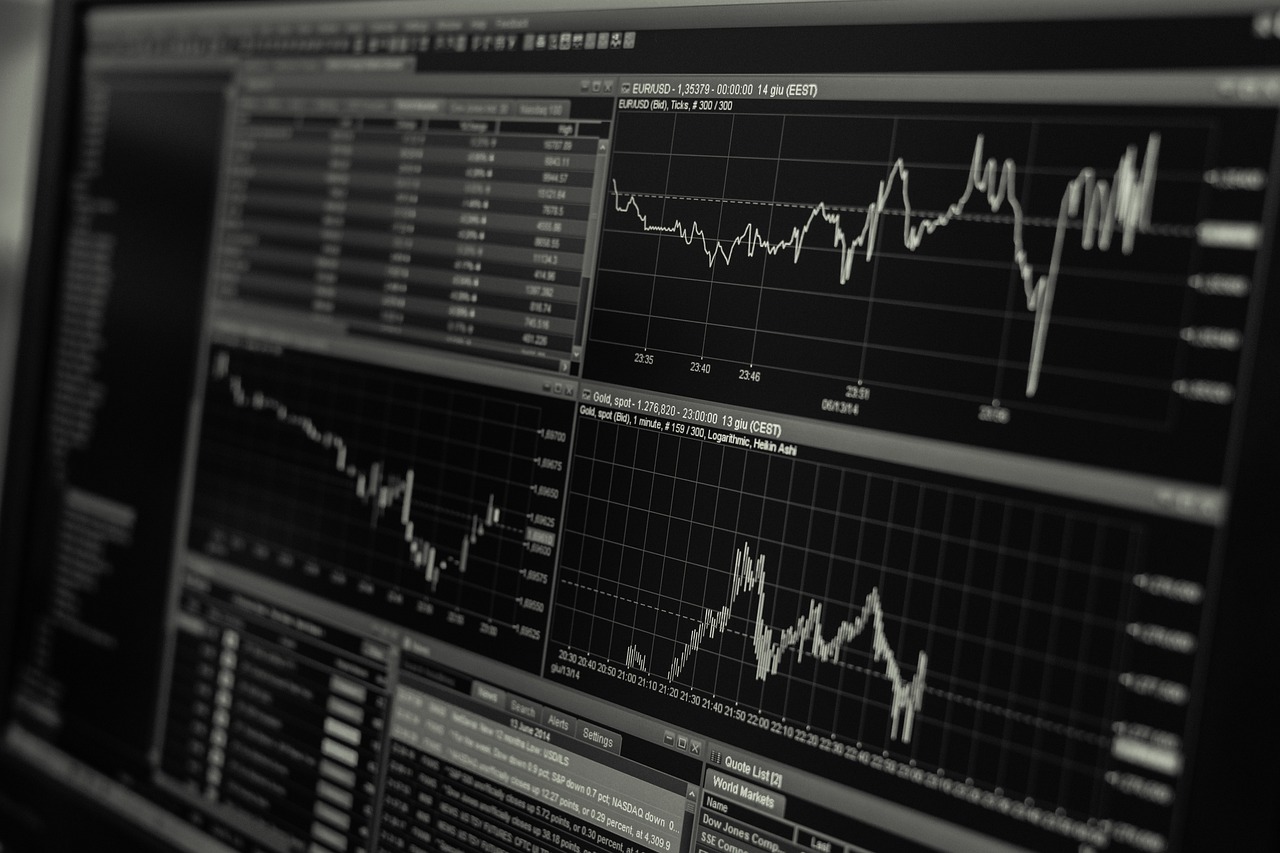
Diversification Strategies
Diversification is a fundamental strategy in trading that aims to spread risk across a variety of assets rather than concentrating it in a single investment. Think of it like a well-balanced diet; just as eating a variety of foods can improve your health, diversifying your investments can enhance your portfolio's stability and potential for returns. By holding a mix of asset classes—such as stocks, bonds, commodities, and real estate—traders can mitigate the impact of poor performance in any single investment. This is crucial because, in the unpredictable world of trading, market conditions can shift rapidly, and having a diversified portfolio can provide a buffer against volatility.
One effective way to implement diversification is by analyzing historical data to identify correlations between different assets. For instance, if you notice that certain stocks tend to move in the same direction during market fluctuations, it might be wise to include assets that behave differently in your portfolio. This way, when one asset is underperforming, another might be thriving, helping to balance your overall returns. A well-diversified portfolio might include:
- Equities: These are shares in companies and can offer high returns, but they also come with higher risk.
- Bonds: Generally considered safer than stocks, bonds can provide steady income and help reduce overall portfolio risk.
- Commodities: Investing in physical goods like gold or oil can serve as a hedge against inflation and economic downturns.
- Real Estate: Real estate investments can offer both income and appreciation potential, diversifying your portfolio further.
To create a diversified portfolio, traders should also consider their risk tolerance and investment goals. A younger investor might lean towards a more aggressive approach, favoring stocks and growth assets, while someone closer to retirement may prioritize stability through bonds and income-generating investments. The key is to regularly review and adjust your portfolio as market conditions change and as you move through different stages of your life.
Moreover, data analysis plays a pivotal role in determining the optimal allocation of assets. By utilizing historical performance data, traders can identify which combinations of assets have historically produced the best risk-adjusted returns. This analysis can be visualized through various tools, making it easier to grasp complex relationships between different assets. For example, a simple table can illustrate the correlation between different asset classes over a specific period:
| Asset Class | Correlation with Stocks | Correlation with Bonds | Correlation with Commodities |
|---|---|---|---|
| Real Estate | 0.30 | 0.10 | 0.25 |
| Commodities | 0.20 | 0.15 | 0.35 |
| Bonds | -0.10 | 1.00 | -0.05 |
As you can see from the table, different asset classes have varying degrees of correlation with one another. This information is invaluable for traders looking to construct a diversified portfolio that minimizes risk while maximizing potential returns. In essence, a thoughtful diversification strategy, backed by data-driven insights, can significantly enhance your trading performance and lead to more consistent financial outcomes.
Q: What is the main purpose of diversification in trading?
A: The main purpose of diversification is to reduce risk by spreading investments across different asset classes. This way, poor performance in one area can be offset by better performance in another.
Q: How do I know if my portfolio is diversified enough?
A: A well-diversified portfolio typically includes a mix of asset classes with low correlations to each other. Regularly reviewing your portfolio and adjusting based on market conditions and personal risk tolerance can help maintain diversification.
Q: Can diversification guarantee profits?
A: No, diversification cannot guarantee profits. However, it can help manage risk and reduce the likelihood of significant losses, leading to more stable returns over time.

Technological Tools for Data Analysis
In the fast-paced world of trading, technological tools have become indispensable for traders aiming to make data-driven decisions. With the sheer volume of data available today, relying solely on intuition or gut feelings is no longer a viable strategy. Instead, traders are turning to advanced tools and software that can analyze vast datasets quickly and accurately. These tools not only streamline the decision-making process but also enhance the overall effectiveness of trading strategies.
One of the most significant advancements in this realm is algorithmic trading. This technology allows traders to automate their trading strategies by using algorithms that execute trades based on predefined criteria. Imagine having a personal assistant who works tirelessly around the clock, analyzing market conditions and making trades on your behalf. That’s the power of algorithmic trading! By leveraging data, these systems can identify patterns and trends that might be missed by human traders, allowing for quicker and more precise execution of trades.
Another essential category of tools is data visualization software. These tools transform complex data sets into visual formats like charts, graphs, and dashboards, making it easier for traders to interpret and analyze the information. For instance, a candlestick chart can provide a clear view of price movements over time, helping traders quickly grasp market trends. The visual representation of data not only aids in quicker comprehension but also enhances the ability to communicate findings with other stakeholders. Some popular data visualization tools include:
- Tableau
- Power BI
- TradingView
Moreover, the integration of machine learning into trading strategies is revolutionizing how traders approach data analysis. Machine learning algorithms can learn from historical data and improve their predictions over time. This means that as more data is fed into these systems, their accuracy and effectiveness can significantly increase. For example, a machine learning model can analyze thousands of variables to determine the most influential factors affecting a stock’s price, allowing traders to make more informed decisions.
The importance of these technological tools cannot be overstated. They not only save time but also provide a competitive edge in the market. However, it’s crucial for traders to choose the right tools that align with their trading style and objectives. While some traders may prefer automated systems, others might find value in tools that offer rich data visualization capabilities. The key is to understand your needs and leverage the appropriate technology to enhance your trading strategy.
In conclusion, as the trading landscape continues to evolve, embracing technological tools for data analysis is no longer optional; it's a necessity. By utilizing algorithmic trading, data visualization software, and machine learning, traders can make more informed decisions, manage risks effectively, and ultimately improve their financial outcomes. The future of trading is data-driven, and those who adapt to these changes will be well-positioned to succeed.
Q: What are the main benefits of using technological tools in trading?
A: Technological tools enhance decision-making, improve efficiency, and provide insights that might be missed through manual analysis. They help traders analyze vast amounts of data quickly and accurately.
Q: How does algorithmic trading work?
A: Algorithmic trading uses computer algorithms to execute trades based on predefined criteria, allowing for faster and more efficient trading compared to manual methods.
Q: What is the role of data visualization in trading?
A: Data visualization tools help traders interpret complex data by presenting it in graphical formats, making it easier to identify trends and patterns.
Q: Can machine learning improve trading strategies?
A: Yes, machine learning algorithms can analyze historical data to identify patterns and improve predictions over time, leading to more informed trading decisions.

Algorithmic Trading
Algorithmic trading, often referred to as algo trading, is a game changer in the world of finance. Imagine having a super-efficient assistant who can analyze mountains of data at lightning speed and execute trades in the blink of an eye. That’s precisely what algorithmic trading does! By utilizing automated systems, traders can set predefined criteria that dictate when and how trades should be executed. This not only enhances efficiency but also helps eliminate the emotional rollercoaster that often accompanies trading decisions.
One of the most significant advantages of algorithmic trading is its ability to process vast amounts of data. Traders can leverage algorithms to analyze historical data, identify patterns, and react to market changes much faster than a human ever could. For instance, algorithms can monitor price movements, news events, and even social media sentiment to make informed trading decisions. This capability allows traders to capitalize on opportunities that might be missed in traditional trading environments.
Here’s a quick breakdown of how algorithmic trading works:
- Data Input: Algorithms require a steady stream of data, which can include price feeds, volume metrics, and even economic indicators.
- Strategy Development: Traders develop specific strategies based on the data they want to analyze. This could be anything from trend-following strategies to arbitrage opportunities.
- Execution: Once the strategy is set, the algorithm executes trades based on the predefined criteria without human intervention.
- Monitoring and Optimization: Continuous monitoring is essential. Traders can adjust the algorithm based on performance metrics and changing market conditions.
Moreover, algorithmic trading can significantly reduce transaction costs. Since trades are executed automatically and often at optimal prices, traders can save money on commissions and slippage. This cost-effectiveness, combined with the ability to trade across multiple markets simultaneously, makes algorithmic trading an attractive option for both individual and institutional traders.
However, it’s essential to recognize that algorithmic trading isn’t without its challenges. The reliance on technology means that traders must ensure their algorithms are robust and capable of handling unexpected market conditions. Additionally, there’s always the risk of technical failures or glitches that could lead to significant financial losses. Therefore, thorough backtesting and risk management strategies are crucial to mitigate these risks.
In summary, algorithmic trading represents a significant evolution in trading practices. It empowers traders to make data-driven decisions quickly and efficiently, reducing emotional biases and enhancing overall performance. As technology continues to advance, the role of algorithmic trading in the financial markets is likely to grow even more prominent, making it an essential tool for modern traders.
Q: What is algorithmic trading?
A: Algorithmic trading is the use of automated systems to execute trades based on predefined criteria, allowing for faster and more efficient trading.
Q: How does algorithmic trading benefit traders?
A: It enhances efficiency, reduces transaction costs, and allows for the analysis of large data sets quickly, enabling traders to capitalize on market opportunities.
Q: Are there risks associated with algorithmic trading?
A: Yes, risks include technical failures, market volatility, and the need for continuous monitoring and adjustment of trading algorithms.
Q: Can anyone use algorithmic trading?
A: While anyone can use algorithmic trading, it typically requires a solid understanding of trading strategies, programming skills, and access to reliable data.

Data Visualization Tools
In the world of trading, where every second counts and decisions can lead to significant financial outcomes, have emerged as essential allies for traders. These tools transform complex data sets into visual formats, making it easier to identify trends, patterns, and anomalies that might not be immediately obvious in raw data. Imagine trying to find a needle in a haystack—data visualization is like using a magnet to pull that needle right into your hand!
One of the most popular tools among traders is Tableau. This powerful software allows users to create interactive and shareable dashboards that illustrate the data's trends over time. With its drag-and-drop interface, even those without a technical background can start analyzing their trading data effectively. For instance, a trader can visualize historical price movements alongside trading volume to spot potential trading opportunities.
Another notable tool is Microsoft Power BI. This tool integrates seamlessly with various data sources, allowing traders to aggregate data from multiple platforms. Its ability to create compelling visual reports makes it a favorite among financial analysts who need to present their findings to stakeholders. Power BI's built-in AI features can even provide insights and recommendations based on the data, adding another layer of depth to trading strategies.
Furthermore, TradingView stands out as a community-driven platform that not only offers advanced charting capabilities but also allows traders to share their analyses and strategies with others. The social aspect of TradingView fosters an environment where traders can learn from one another, creating a rich tapestry of shared knowledge. With features like customizable indicators and real-time data feeds, it is an invaluable resource for anyone looking to enhance their trading game.
When choosing a data visualization tool, traders should consider several factors. Here’s a quick comparison table of some popular tools:
| Tool | Key Features | Best For |
|---|---|---|
| Tableau | Interactive dashboards, drag-and-drop interface | Visualizing complex data |
| Microsoft Power BI | Data integration, AI insights | Comprehensive reporting |
| TradingView | Community sharing, customizable indicators | Social trading and analysis |
Ultimately, the right tool can significantly impact a trader's ability to make informed decisions. By leveraging data visualization, traders can not only enhance their understanding of market dynamics but also communicate their findings effectively to others. Visual representations of data act as a bridge between complex analytics and actionable insights, empowering traders to navigate the turbulent waters of the financial markets with confidence.
In conclusion, embracing data visualization tools is akin to equipping oneself with a powerful telescope in the vast universe of trading. Instead of squinting into the darkness, traders can now see the stars clearly, guiding their strategies and decisions towards success.
- What are data visualization tools? Data visualization tools are software applications that help users interpret complex data sets by converting them into visual formats such as charts, graphs, and dashboards.
- Why are data visualization tools important in trading? They help traders quickly identify trends, patterns, and anomalies in the market, enabling faster and more informed decision-making.
- Which data visualization tool is best for beginners? Tools like Tableau and TradingView are user-friendly and offer extensive resources for beginners to learn and grow their trading skills.
- Can data visualization tools integrate with other trading platforms? Yes, many data visualization tools, such as Microsoft Power BI, can integrate with various trading platforms to provide a comprehensive analysis of market data.
Frequently Asked Questions
- What is data-driven trading?
Data-driven trading is the practice of making trading decisions based on quantitative analysis and statistical data. By leveraging historical price data, market sentiment, and economic indicators, traders can enhance their strategies and improve their overall performance.
- How does historical price data help in trading?
Historical price data provides insights into past market behavior, allowing traders to identify trends and patterns. By analyzing this data, traders can make informed predictions about future price movements and refine their trading strategies accordingly.
- What is market sentiment analysis?
Market sentiment analysis involves gauging the overall attitude of traders toward a specific security or market. Understanding market sentiment can help traders anticipate potential price movements and adjust their strategies based on the prevailing mood of the market.
- How can data improve risk management in trading?
Data plays a crucial role in effective risk management by enabling traders to identify, assess, and mitigate risks. By analyzing data, traders can set optimal stop-loss orders and create diversified portfolios, which helps in spreading risk across various assets.
- What are stop-loss orders and why are they important?
Stop-loss orders are predetermined orders to sell a security when it reaches a certain price, limiting potential losses. Data analysis can inform the optimal placement of stop-loss orders based on current market conditions, enhancing a trader's risk management strategy.
- What is algorithmic trading?
Algorithmic trading refers to the use of automated systems to execute trades based on predefined criteria. These algorithms leverage data to optimize trading strategies, improve efficiency, and take advantage of market opportunities at lightning speed.
- What tools can help with data visualization in trading?
Data visualization tools, such as charts and graphs, help traders interpret complex data sets easily. Popular tools include Tableau, TradingView, and Excel, which enhance trading analysis and decision-making by presenting data in a more digestible format.
- How can backtesting improve trading strategies?
Backtesting allows traders to test their strategies against historical data to evaluate performance. By simulating trades based on past market conditions, traders can identify strengths and weaknesses in their strategies, leading to better decision-making in real-time trading.






